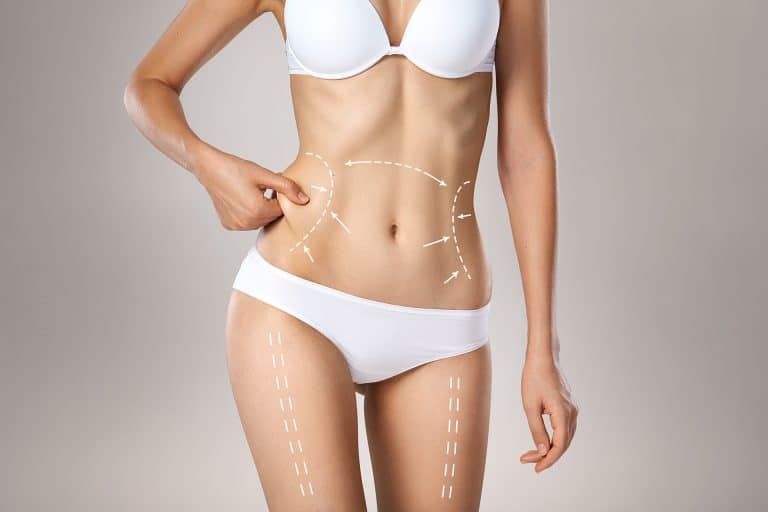From Greek Sculptures to Instagram Influencers: A Historical Look at the Obsession with Abs
When Gerard Butler famously belted out “This . . . is . . . SPARTA!” as King Leonidas in the blockbuster movie 300, no one was worried about the historical accuracy of the quote. Instead, everyone was fascinated by one thing–the actor’s rock-hard abdomen, as well as those of his supporting cast, all of whom were able to make fantastically toned stomach muscles standard issue for Greek soldiers. Chatter about the movie centered almost solely on the physiques of the actors, rather than the plot. The consensus was that the entire cast must have spent months in the gym to attain these looks; some even speculated that they were the result of CGI technology, suggesting that no one could have such chiseled muscles–a claim the actors hotly disputed!
It is easy to see that this fascination with the “six pack” has shown no signs of slowing down: Instagram’s #sixpack, which does not refer to beer, has more than 12 million followers, all of whom presumably want to be able to flaunt their tight abdominal muscles. When did we become obsessed with six-pack abs, and is this a healthy goal for most of us?
Social Media and Body Image
Before delving into the six-pack obsession in particular, it is important to understand the role of social media in any body-centric craze. Social media posts are often curated or even adapted to show a fictionalized version of reality. Makeup, hair, and even cooking posts often give viewers the impression that anyone can achieve similar results, but in reality they represent only a tiny percent of the population. Nevertheless, consumers are likely to feel inadequate or suffer low self-esteem if they cannot come up to the standards they see on social media, which creates a dangerous situation.
Today’s craze with six-pack abs is no different. Both men and women are increasingly pressured to have chiseled abdominal muscles that, when flexed, create the “six pack” shape so coveted by body builders. How realistic is this expectation, and when did this ideal begin?
What Are Six-Pack Abs?
The abdominal muscles that are the focus of six-pack abs are actually one long muscle called the abdominus rectus that runs from the sternum, or breastbone, down to the pubic bone. This muscle is criss-crossed with bands of connective tissue called fascia. In most people, three bands will cross this muscle, dividing it into six parts (the six-pack). However, in some people, only two bands will tighten the muscles, creating a “four pack,” and in some people, four bands will tighten the muscle into an “eight pack.” This is largely due to genetics and cannot be changed. Therefore, from the start, some people will never develop a six-pack, no matter how hard they work. In fact, Arnold Schwarzenegger, one of the most famous bodybuilders in the world, never achieved more than a four-pack due to having less connective tissue in his abdomen.
How Long Has the Six Pack Been Around?
It is tempting to think of the six-pack as a recent craze, but history shows that obsession with a trim, toned abdomen has actually been a standard for many years.
In Ancient Greece, men and women were prized for having toned, muscular bodies, including well-defined abdomens. Many ancient Greek paintings and sculptures show physiques that feature what we would today call six-pack abs, although the attention to definition may not be as clear. Greek athletes were praised for their ability in wrestling, racing and gymnastics–all activities that build strong abdominal muscles.
Later generations experienced a slight shift from the Classical obsession with the perfect body. Throughout the Middle Ages, a desire for wealth was at war with a desire for a “fighting physique.” While wars raged constantly, men had a need to stay in good shape in order to defend their countries against invaders. Physically strong men were able to protect themselves; weaker ones could not. Therefore, societies understood the need for men to regularly exercise, particularly those exercises that practiced skills needed in battle. In addition, most people during these years were engaged in hard physical labor that naturally kept them in strong physical shape.
On the other hand, having the leisure to eat, relax, and put on weight was a sign of wealth and privilege. For a long time, having a round belly was a sign that you were able to avoid the realities of war or hard labor, and what we would consider obesity today was admired and accepted as a status symbol.
By the 18th century, a return to interest in Classical Greece brought with it a fascination with the perfect human form. Thanks to the Industrial Revolution, more and more people had the leisure to pursue exercise as a hobby. Throughout the 18th and 19th century, there was a growing interest in developing a lean, muscular body through exercise in order to mimic the perfect bodies seen in the Greek statutes. Physical education became a reality, and millions of people began to understand the need for regular exercise as well as how to target certain muscle groups. Of these, the most often targeted was the waistline.
Finally, by the early 1900s, an entire industry had developed with nutritional supplements, gadgets and exercises specifically designed to give people the abdomen they wanted. This trend continued until the late 1980s, when the term “six pack” abs was born out of photos and newsreels of bodybuilding competitions which featured men and women who had cultivated incredibly chiseled abdominal muscles.
Is It Safe To Seek Six Pack Abs?
While there is nothing wrong with working out to improve your muscle tone within reason, it is also easy to injure yourself if you become obsessed with changing a single muscle group or having it appear a certain way. A good program of exercise and weight lifting targets the whole body, not one muscle group.
Additionally, individuals must also recognize their own limitations. Not everyone has the muscular setup to achieve a six-pack. When this happens, it is important to set realistic goals.
Will a Plastic Surgery Yield You 6-Pack Abs?
The standard abdominoplasty, commonly known as tummy tuck, will tighten your abdominal muscles and skin and does not help with abdominal definitions. Also the standard liposuction does not help with creation of 6 pack look. The 4 or 6-pack definition is associated with the size of your rectus abdominis muscles, which is usually achieved by exercising and nutrition. However, Dr. Agha’s signature high-definition tummy tuck goes a long way in creating a sculpted and well-defined abs in most patients. Another way of achieving the 6-pack tummy is via lipo-etching, but this is subject to change with future weight gain and weight loss.
At The Aesthetic Center, we work with our patients to help them set goals that will improve their self-esteem, rather than promise results that cannot be delivered. We want to see you healthy, happy and full of self-confidence! Give us a call today to learn more.







